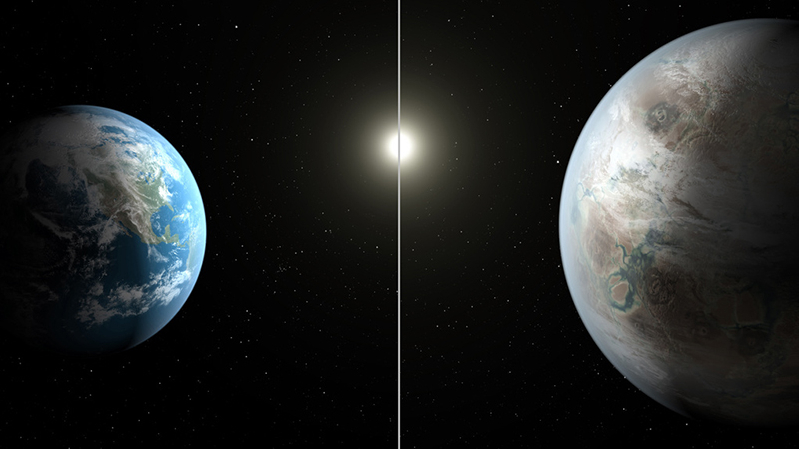
Officials at NASA announced on Wednesday that a new planet similar to the composition of Earth has been discovered in outer space. The planet, Kepler 452b, is 60 percent bigger than Earth.
According to Amina Khan of the Los Angeles Times, Kepler-452b is about 1,400 light-years away in the constellation of Cygnus. It circles a "sun-like" star and its year lasts 385 days.
"Today we're announcing the closest twin, so to speak, to Earth 2.0 that we've found so far in the data set," said associate administrator John Grunsfeld of NASA's Science Mission Directorate in Washington on Thursday.
Scientists told the Los Angeles Times that the planet's combination of factors make it the closest analogue to Earth ever found. They estimated that Kepler 452b's star system is about 6 billion years old; Earth's solar system is estimated to be 4.6 billion years old.
"That's considerable time and opportunity for life to arise somewhere on its surface or in its ocean, should all the necessary ingredients and conditions for life exist on this planet," said John Jenkins, the Kepler data analysis lead who led the discovery of the new planet from NASA's Ames Research Center.
According to John Wenz of Popular Mechanics, Jenkins also indicated that humans would be able to adapt to the planet's conditions. Compared to Earth, the gravity is twice as strong there.
"I suspect that over time we'd adapt to the conditions," Jenkins said. "Certainly it might be very challenging at first."
However, Kepler research scientist Jeff Coughlin of the SETI Institute pointed out that Kepler 452b is the only confirmed Earth-like planet out of a total of 4,696 planets and planet candidates. He told Wenz that further study would be conducted on 11 other candidates.
"We're digging into the noise, so I have to caution that these are candidates, and not all candidates pan out," Coughlin said.
According to Wenz, the data sets used to confirm Kepler 452b "come from more refined techniques that can detect planets around even extremely faint stars." Coughlin commented on the challenges in confirming the existence of Kepler 452b.
"When you dig into these really low signals, there's a lot of noise to sort out," Coughlin said.
However, scientists told the Los Angeles Times that humans would be unable to visit Kepler 452b or any of the candidate planets anytime soon.
"You and I probably won't be traveling to any of these planets without some unexpected breakthrough, but our children's children's children may," Coughlin said. "So I think this really gives you something to aim for. Kepler is the first step. We're finding out if planets like Earth are common - and the answer seems, so far, to be yes."







